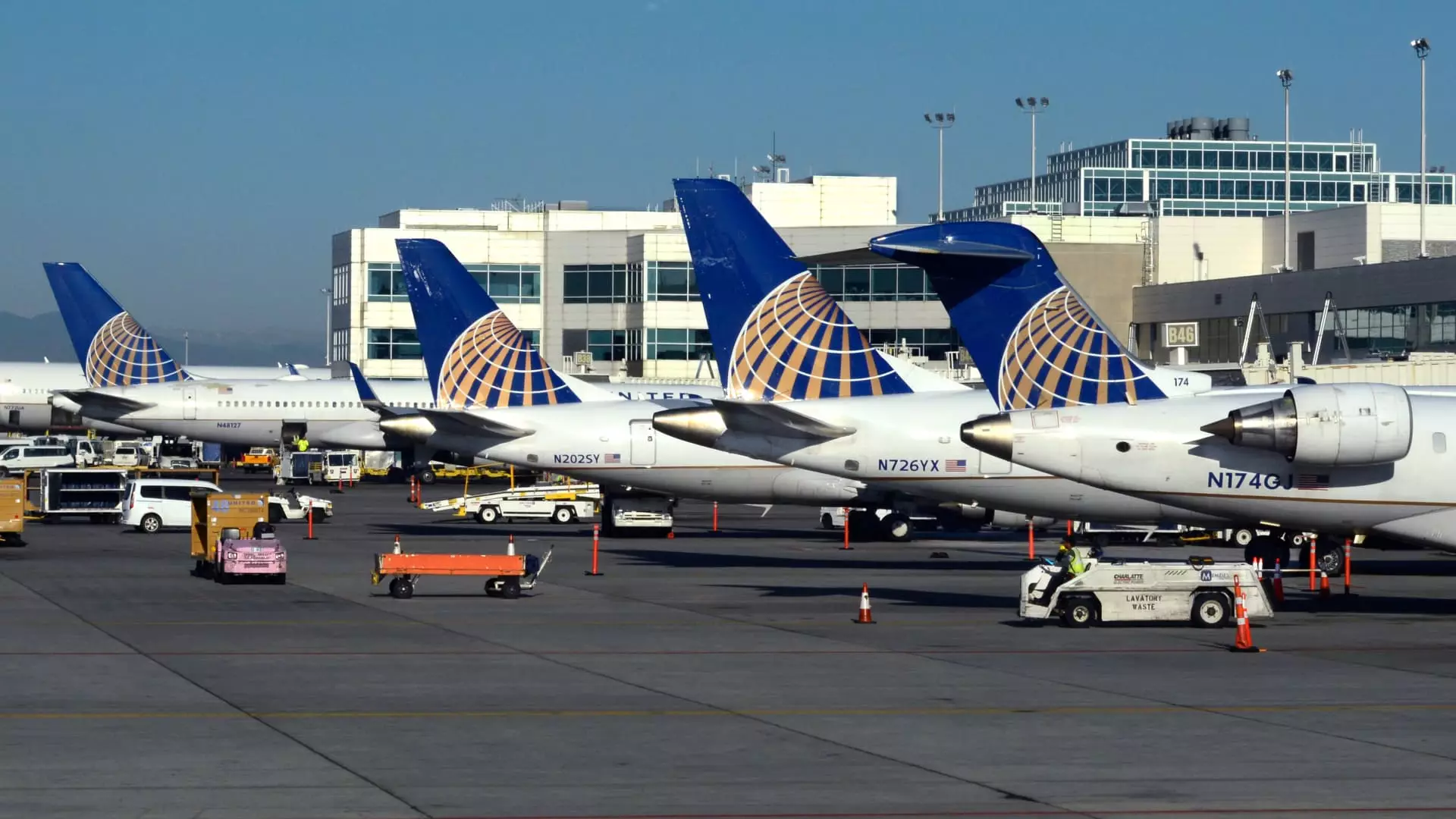United Airlines recently went public with their decision to increase fees for annual airport lounge memberships and rewards credit cards, unveiling a controversial move in the travel industry that many see as a direct test of consumer loyalty and spending limits. The changes, announced alongside appealing sign-up bonuses for its co-branded credit cards through JPMorgan Chase, raise eyebrows amidst an ever-increasing trend of airlines monetizing every aspect of travel. The introduction of benefits like rideshare credits and discounts on award flights feels more like a smokescreen for the unwelcome reality of rising costs.
The Value Proposition: More Benefits or More Fees?
Richard Nunn, the head of United’s MileagePlus loyalty program, insists that these fee increases are offset by new benefits provided to consumers. However, one must question whether any additional perk can genuinely justify an increase in price. As an airline that is among many struggling to find a balance between profit-making and customer satisfaction, United appears to be leaning heavily towards the former. With airfare already soaring and travel costs at an all-time high, the idea that consumers will simply accept higher fees because there are slightly improved benefits is both naive and condescending.
Lounge Access: A Tale of Privilege and Exclusivity
The essence of airport lounges has shifted. Once perceived as an exclusive perk for the discerning traveler, United’s lounges have now become overcrowded due to the insatiable appetite for premium credit cards. As airlines like Delta and American also upgrade their lounge offerings, one wonders if this accessibility is merely further diluting the value that “lounge access” once held. Instead of exclusivity, we find ourselves grappling with the reality of a commoditized experience, and United’s move to raise entry fees feels less like a service upgrade and more like opportunism.
The Numbers Don’t Lie: Where is the Profit Going?
Revenue from loyalty programs has proved to be a goldmine for airlines, with United reporting an astonishing $3.49 billion last year from “other” revenue sources. This overwhelming financial gain, primarily from co-branded card spending and lounge memberships, raises questions about where that money is really being funneled. Given that this sector is persistently growing, it’s concerning that the average traveler seems to be bearing the brunt of these monetary choices, while airlines continue to enhance their profit margins.
The Consumer Dilemma: To Pay or Not to Pay?
As consumers navigate this evolving landscape marked by increased airfare and ancillary fees, they are forced into a decision: adapt to these changes or abandon their allegiance to companies that seem to prioritize profit over loyalty. United’s latest adjustments illustrate a broader trend within the airline industry that challenges the notion of consumer loyalty. With alternative travel options emerging, consumers may start to reconsider not just their loyalty programs but their overall travel choices.
In this age of diminished loyalty and heightened exploitation, traveling has transformed from an adventure into a transactional endeavor. What remains to be seen is how long consumers are willing to accept pouring more money into a system that seems increasingly out of touch with their needs.

